Food Related Allergies | Food Related Intolerances | Food Labeling
Food Related Allergies
|
Allergic reactions in humans are initiated by the immune system through an endless number of stimuli including bee stings, vinyl, metals, dust, cosmetics, medicines, and so on. Food related allergies are among the most common.
Food allergies in humans are caused by the immune system's response to certain food proteins. Specifically, the immune system creates antibodies that react with particular food proteins; then chemicals, such as histamine (a chemical that expands blood vessels, making them more permeable, which in turn, facilitates allergic reactions) are released by the body, which cause the wide range of symptoms and conditions related to the allergic response. For some people, these symptoms and conditions are mild and are more of a nuisance than anything else, while in other people, the symptoms and conditions may be severe or life threatening.
Many years ago, medical science was unable to provide a diagnosis or determine an actual cause for a variety of strange maladies that seemed to be a result of consuming certain foods. Today, while there is still no cure for food allergies, much has been learned about their causes, and significant progress has been made in providing effective, and in some cases, life saving treatments. |
Common Symptoms Caused by Food Allergens
Some of the common symptoms and conditions caused by food allergens are listed below. It is important to remember that the symptoms and conditions are not always identical for people with the same food allergy, and the severity of the symptoms are often different as well.
- Nausea
- Vomiting
- Abdominal cramps
- Diarrhea
- Profuse sweating
- Shortness of breath and difficulty breathing
- Low or high blood pressure
- Tingling in the mouth
- Swelling of the tongue and throat
- Skin reactions including itchiness, hives, and eczema
A severe or extreme degree of some of the symptoms, such as swelling of the tongue and throat and changes in blood pressure, can lead to an inability to breathe properly, resulting in unconsciousness and death. This extreme level of symptoms is known as anaphylaxis. Prompt medical attention in these cases is vital in order to save the person's life. Some people may be required to carry on their person at all times, an emergency injection of medication, which is designed to ease the severe, life-threatening symptoms in the event that the allergy-causing protein is unknowingly consumed. |
Foods that Cause Allergic Reactions
Although food allergies affect people of all ages, four to six times as many children have food allergies as adults. There are eight specific foods or types of foods that are responsible for 90 percent of all food allergies in humans. While some of these foods are more often responsible for allergic reactions in adults than children, people of all ages may have allergic reactions to the same foods. Four of the foods among the eight are responsible for most of the food related allergic reactions in adults and five of the foods cause the majority of food allergies in children. |
|
Fish
(Adults)

|
Shellfish
(Adults)

|
|
Tree Nuts
(Adults)

|
Peanuts
(Adults and Children)

|
|
Cow's Milk
(Children)

|
Eggs
(Children)

|
|
Wheat
(Children)

|
Soy
(Children)
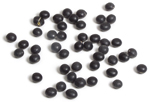
|
Food Related Intolerances
Lactose Intolerance | Gluten Intolerance
|
Unlike food allergies, which involve the immune system, food intolerances are caused by the inability of the body to digest certain foods. Depending on the severity of the intolerance, people must either limit their consumption of foods containing a troublesome ingredient or they must avoid them completely. Intolerance to lactose, a sugar found in milk; and intolerance to gluten, a protein found in wheat, are two of the most common food related intolerances in humans.
Although there are numerous symptoms and conditions associated with food intolerances, the most commonly encountered symptoms are cramping and diarrhea. As it is with people who have food allergies, the severity of symptoms encountered among people suffering with food intolerances may vary greatly from one person to another. Intolerance to specific foods or food groups usually becomes worse with age, while food allergies may lessen, or occasionally, disappear with age.
As with any condition or disease, people with food intolerances must educate themselves concerning their particular condition in order to prevent or lessen the day to day complications they may encounter. It is important for people to gain knowledge on the foods that contain troublesome substances, and it is equally important for food intolerance sufferers to learn about specific foods they can use as substitutions. Reading and understanding food labels is vital for ensuring that a particular processed food does not contain an ingredient that could create difficulties. |
 |
 |
| Lactose (a sugar found in milk and milk products) and gluten (a protein found in some grains and the products made from the grains) are two of the most common food intolerances. |
Lactose Intolerance
When people are lactose intolerant, their digestive systems are unable to digest lactose, which is the sugar found in milk and milk products. In some people, the intolerance is not severe, allowing them to consume small amounts of milk and milk products without any adverse effects. In other people, the intolerance may be so severe that they may not be able to consume any products containing lactose.
Intolerance strictly to cow's milk is not the same as being lactose intolerant, although the two are often confused. Cow's milk intolerance is an allergic reaction initiated by the immune system rather than a problem centered in the digestive system. |
 |
|
Controlling Diet in Lactose Intolerance Individuals
Common symptoms associated with lactose intolerance include nausea, bloating, cramps, and diarrhea. Diet is very important in managing the symptoms. Through trial and error, an individual with lactose intolerance will learn which foods (and how much of these foods) containing lactose he or she may consume with no ill effects and which foods should be avoided. One person may be able to tolerate a small quantity of milk while another person may be able to tolerate cheeses and ice cream in similar quantities enjoyed by people who are fully tolerant to lactose. |
Most large food stores carry milk and milk products that have been specially processed to reduce the lactose content of the product. Lactose-reduced milk has the benefit of retaining all of the nutrients of regular milk that are so important in a balanced diet. |
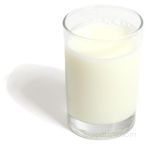
Lactose-reduced Milk |
|
|
The Importance of Calcium
Calcium is one of the nutrients in milk that is vital for good health, specifically for maintaining strong bones. An adequate supply of calcium can be maintained through supplements, if recommended by a doctor, but a well balanced diet usually provides good results.
For people with lactose intolerance, an adequate supply of calcium can be achieved through a balanced diet even though milk cannot be part of their diet. A number of dairy products are good sources of calcium, such as yogurt, cheese, and ice cream, but they contain a lower level of lactose than milk. Many lactose intolerant people, who may not be able to tolerate milk, may be able to consume some of the other dairy products with little or no ill effects.
Yogurt, cheese, and ice cream are some of the other dairy products that
are good sources of calcium while having a lower level of lactose than milk. |
|
For people who cannot tolerate any lactose in their diet, and consequently, are unable to enjoy any dairy products, there are many nutritious nondairy foods that contain calcium. Soy milk, broccoli, and oranges are good sources of calcium. Various types of fish that contain soft edible bones, such as canned salmon and sardines, are also high in calcium.
Good Nondairy Sources of Calcium |
|
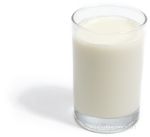
Soy Milk |

Broccoli |
|

Orange |

Sardines |
| Orange juice (already a good source of calcium) that has been fortified with additional calcium is available in most food stores. |
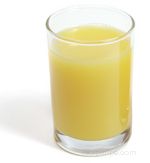
Calcium-fortified Orange Juice | |
|
The average adult must drink 3 ½ to 5, 1-cup servings (28 - 40 oz. total) of reduced fat milk to maintain their daily requirement of calcium, which ranges between 1000 mg and 1500 mg. The required calcium intake depends on age, sex, being pregnant, or nursing.
Listed below are several foods that are good sources, and in some cases, unexpected sources of calcium. The quantity of each of the foods that must be consumed every day, to supply the required daily intake of calcium, is shown in order to provide a comparison with the quantity of reduced fat milk required (28 - 40 oz.) to achieve a similar calcium intake.
- Swiss Cheese: 4 to 5 ½, 1-ounce servings (4 - 5.5 oz. total). Swiss cheese is tolerated quite well by some lactose intolerant people.
- Low-fat Yogurt: 2 ½ to 3 ½, 1-cup servings (20 - 28 oz. total).
- Raw Broccoli: 11 to 17, 1-cup servings.
- Medium-size Orange: 20 to 30 medium-sized oranges would have to be eaten daily to supply the required level of calcium.
Eating twenty or thirty oranges a day probably is not an advisable method for ensuring that the required level of calcium is being met. It is evident that a balance of calcium-rich foods is necessary to ensure that lactose intolerant people are maintaining an adequate supply of calcium, as well as maintaining the proper balance of other vital nutrients.
It is also important to remember that calcium is absorbed only when the level of vitamin D in the body is adequate. A balanced diet usually supplies an adequate amount of vitamin D. Sunlight is an important component for enabling the body to absorb vitamin D. |
|
Nondairy Foods that may Contain Lactose
A wide range of nondairy foods contain lactose. In people with a high intolerance to lactose, it is very important to know which nondairy foods should be avoided. Many types of highly processed foods may contain lactose including commercially prepared baked goods, breakfast cereals, pancake and biscuit mixes, candy, margarine, instant potatoes, lunch meats, fruit flavored drinks, and many more. It is important to read food labels carefully to ensure that a particular product will not cause a potential problem. Any products with ingredient lists containing words such as dry milk solids, milk byproducts, nonfat dry milk powder, whey, curds (as well as the obvious words, milk and lactose), should be avoided.
Nondairy Foods that may Contain Lactose |
|

Baked Goods |
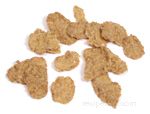
Breakfast Cereal |

Candy |
|

Margarine |

Lunch Meat |
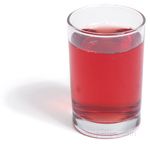
Fruit Drinks |
Gluten Intolerance
 Gluten is the protein that gives dough its elasticity and strength and makes the dough rise. When people experience an intolerance to gluten, their intestinal tracts are unable to digest gluten properly, which causes a number of symptoms and conditions, such as bloating, cramps, and diarrhea. Gluten is the protein that gives dough its elasticity and strength and makes the dough rise. When people experience an intolerance to gluten, their intestinal tracts are unable to digest gluten properly, which causes a number of symptoms and conditions, such as bloating, cramps, and diarrhea.
Wheat has a high level of gluten. Other grains that contain gluten are barley, rye, and triticale. Grains related to wheat, such as spelt and kamut®, also contain the proteins necessary to form gluten.
Sensitivity to wheat/gluten affects humans in three different ways:
as a wheat allergy, a gluten intolerance, and in the form of celiac disease. |
|
Wheat Allergy
Description: A wheat allergy is usually the least serious among the three major categories of wheat/gluten sensitivities.
Symptoms: Watery eyes, itchy eyes and skin, runny nose, possible skin rashes, and even diarrhea are noticeable soon after consuming wheat or wheat products.
Self-help: People who have a wheat allergy can eliminate wheat and wheat products from their diets in order to relieve distressing symptoms. It may be possible for a person with a wheat allergy to consume other foods that contain gluten, such as rye, although every person is different and will need to develop their own list of foods that are safe to eat. It is always best to read the labels on all food products to ensure that wheat is not an ingredient.
|
|
Gluten Intolerance
Description: Intolerance to the gluten found in wheat is quite different than having an allergic reaction to it, and it is more serious. While an allergic reaction is triggered by the immune system, intolerance to gluten is associated with the digestive system. There are special antibody screenings available to determine whether a person has an intolerance to gluten.
Symptoms: Stomach pain, bloating, diarrhea, malabsorption, skin rashes, muscle and joint pain, headache, and fatigue.
Self-help: When all sources of gluten and any products containing gluten are removed from the diet, the troublesome symptoms should disappear. It is worth noting that while consuming gluten will cause any number of the symptoms listed, the intestinal tract usually will not be damaged by ingestion of gluten. Again, read the labels on all food products to ensure that the item does not contain gluten.
|
|
Celiac Disease
Description: Celiac disease is the most serious form of wheat/gluten sensitivity. Unlike gluten intolerance in which consumption of gluten will cause distressing symptoms but, in most cases, will not cause permanent harm to the intestinal tract, the small intestine in a person with celiac disease may be destroyed if gluten is consumed.
Symptoms: Any number of the symptoms listed under gluten intolerance may occur in a person with celiac disease. Some people may experience a much more severe form of these symptoms when gluten is consumed. Eventual destruction of the small intestine may be the result. Other serious diseases, such as cancer, may also occur.
Self-help: It is extremely important that celiac disease sufferers remove all foods containing gluten from their diets. This may seem difficult in some cases because so many foods contain gluten. You must read all food labels to ensure that a particular product does not contain gluten. Keep in mind that some products that you have become accustomed to might be reformulated with new ingredients, some of which may contain gluten.
|
|
Non-gluten Flour
Some non-gluten flours that are safe to consume by gluten-intolerant individuals are rice (brown and white), potato, chickpea, quinoa, cornmeal, soy, sorghum, and buckwheat. (Note: In spite of its name, buckwheat is not a form of wheat. It is an herb plant related to rhubarb and sorrel. The buckwheat plant yields seeds used as a grain.)
Types of Non-gluten Flour |
|
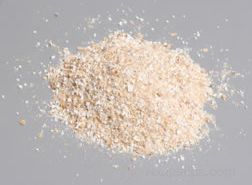
Buckwheat Flour
|
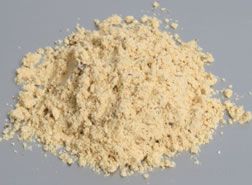
Chickpea Flour
|
|
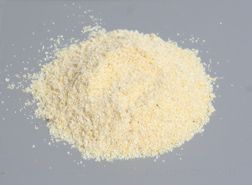
Cornmeal
|
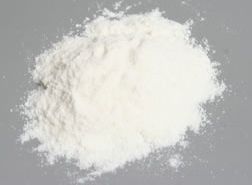
Rice Flour
|
|

Quinoa Flour
|
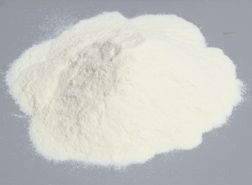
Potato Flour
|
|
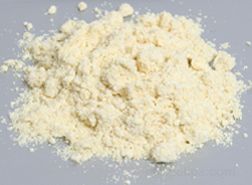
Soy Flour |
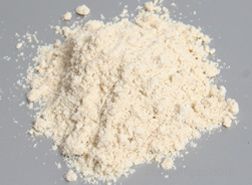
Sorghum Flour |
|
Foods that may Contain Gluten
Besides pasta, breads, and many other baked goods, which are the most obvious foods containing gluten, there are many other products that may contain gluten that are not so obvious. Foods as varied as distilled vinegar to canned soups may contain gluten, so reading the label is very important to ensure that a product is gluten-free and has been processed in a gluten-free environment (even small traces of gluten contamination in a manufacturing environment can be transferred to other foods).
Some of the Not-so-obvious Products that may Contain Gluten |
|
Dairy Products
- Some varieties of ice cream contain gluten.
- Various brands of cheese spreads often contain gluten.
- Some fat-free dairy products may contain gluten.
|

Ice Cream |
|
Vegetables
Commercially prepared vegetable dishes that are breaded, creamed, or scalloped usually contain gluten. |
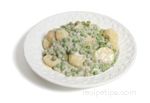
Creamed Peas
and Potatoes |
|
Fruit
Fruits that are canned may contain a syrup that is thickened with a substance containing gluten. |

Fruit Compote
in Heavy Syrup |
|
Soups
- Some varieties of commercially produced canned soups may be thickened with substances containing gluten.
- Dehydrated soup mixes often contain varying degrees of gluten.
|

Vegetable Beef Soup |
|
Condiments
- Some brands of soy sauce may contain gluten.
- Various brands of ketchup may contain gluten.
- Gluten can be found in a variety of mustards.
- Some varieties of dry spice blends contain gluten.
- Vinegar that has been distilled from grains contains gluten.
- Some types of salad dressing contain a modified starch that often contains gluten.
- Some varieties of rice syrup contain barley malt for flavoring, which contains gluten.

Vinegar |
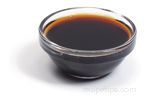
Soy Sauce |
|

Ketchup |
|

Rice Syrup |
|
Candy
Candies may contain gluten if flour is one of the ingredients. To prevent candies from sticking together, some types may be dusted with flour that contains gluten, thus contaminated the candy with gluten even though the ingredients in the candy may be gluten-free. It is best to read the label to make sure the product was manufactured in a gluten-free environment. |

Candy Corn |
|
Imitation Seafood Products
Imitation seafood products, such as commercially produced imitation crab meat, may be prepared with binders and fillers containing gluten. |

Imitation Crab Meat |
|
Extracts and Flavorings
Extracts and flavorings are often combined with alcohol distilled from grains that contain gluten. |

Vanilla Extract |
|
Beverages
- Soft drinks that may contain gluten include malted milk; some chocolate drinks; some flavored coffees; and some carbonated soft drinks, such as root beer.
- Alcoholic beverages that may contain gluten include beer, ale, and spirits that have been distilled from grains.
|

Beer |
|
Nonfood Sources of Gluten
- Adhesive for envelopes may contain gluten. For gluten intolerant individuals, it is best to moisten the adhesive on envelopes by some means other than licking it.
- Some medications may contain varying amounts of gluten. Gluten-containing medications include various types of prescription and over-the-counter pills.
|
| Note: It is important to remember that many restaurant foods containing gluten-free ingredients may be prepared next to, or on, surfaces in which high-gluten foods have been prepared, making gluten contamination a possibility. An example would be the use of a griddle for preparing a gluten-free food that is also used for cooking a high-gluten food, such as pancakes. When in doubt, it is best to ask when ordering certain foods in a restaurant to ensure that gluten is not transferred to non-gluten foods. |
Food Labeling
|
The only way to prevent a food related allergic reaction or intolerance from occurring is to avoid the food that causes it. Education is the key to living with food allergies and intolerances; therefore, reading food labels has become second nature for most people suffering with food allergies or intolerances. Food labels provide important information concerning troublesome food ingredients.
- Food labels disclose whether a particular processed food item contains an ingredient that is a potential allergen. All substances used for producing the food item are shown in the ingredients list, and specific allergens, such as peanuts or dairy products, are noted in highlighted areas below the ingredients list and/or elsewhere on the label. There may be instances, however, when certain ingredients listed on the label may be variations of specific allergens that you are trying to avoid, or products may be reformulated and may include unfamiliar substances that may contain gluten. In these cases, it is always best to consult a dietitian or a physician before consuming any commercially prepared foods that contain mysterious ingredients.
- Food labels disclose whether a particular food item, which may contain no known allergens, has been processed in a facility that also processes foods that are known allergens. For example, a candy product that does not contain peanuts may be manufactured in a facility in which peanuts are used as an ingredient in other products manufactured in the facility. For people who have a life threatening allergic reaction to peanuts, there is always the possibility that cross contamination (from dust or residue) may have occurred between products that contain peanuts and products that do not. Also, it is possible that dust and residue from peanuts may have adhered to equipment used for processing other foods, thus contaminating the food that does not contain peanuts.

Note: Three foods, wheat, soy, and milk, that are known to
produce adverse reactions in some people, have been highlighted
at the bottom of the ingredients list on the label of this food product. | |










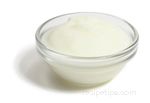













 Gluten is the protein that gives dough its elasticity and strength and makes the dough rise. When people experience an intolerance to gluten, their intestinal tracts are unable to digest gluten properly, which causes a number of symptoms and conditions, such as bloating, cramps, and diarrhea.
Gluten is the protein that gives dough its elasticity and strength and makes the dough rise. When people experience an intolerance to gluten, their intestinal tracts are unable to digest gluten properly, which causes a number of symptoms and conditions, such as bloating, cramps, and diarrhea.

















